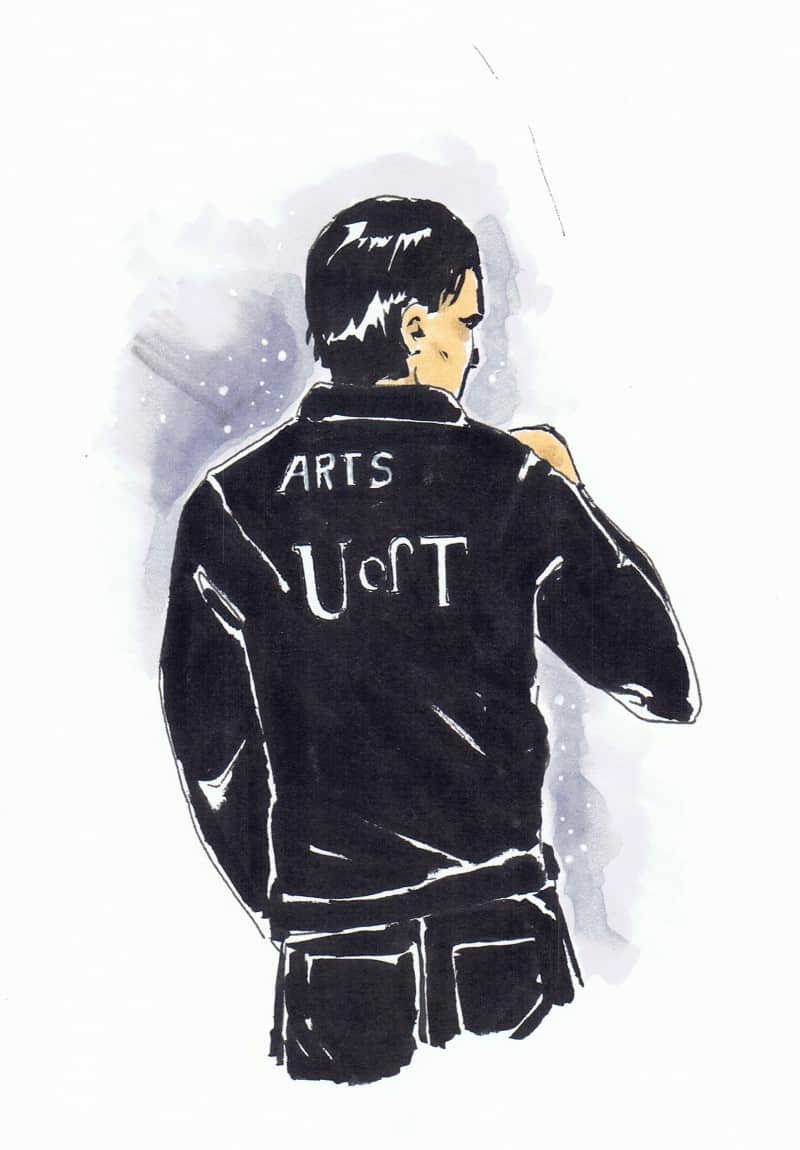[dropcap]I[/dropcap]T’S a common complaint that the university’s St. George campus lacks a strong campus community, let alone a distinct identity that binds students from all colleges and faculties. Instead, if they exist at all, traditions and identities are fragmented and left up to individual colleges and faculties to define. The campus’ large physical size discourages a connected community feeling amongst students from different disciplines. On top of this, many students — myself included — are commuters who are more removed from the campus in general.
In short, it’s so easy for students to scatter off to the winds, that it’s difficult for a critical mass of students to feel at home on campus. Given the disperate nature of the U of T community, perhaps something wearable may help distinguish students and mark them out as part of a cohesive community.
We already have some wearable traditions on campus — the Engineers’ Skule jackets, or Trinity College’s gowns — but these are tailored exclusively for their respective communities, within U of T, rather than for the university as a whole. Many of us have bought sweatshirts and other clothing items from the bookstore, but this merchandise can be worn by anyone, not just students and alumni, which makes their use as a sure-fire marker of U of T membership limited.
Recently, at a service centre along the highway between Kingston and Toronto, I couldn’t help but notice the distinctive jackets worn by Queen’s University students and alumni. From the perspective of an outsider, it seemed like a spectacularly successful tradition with strong staying power, which led me to deconstruct the mechanics of this tradition in the service of U of T.
Every Queen’s student is encouraged to get a leather jacket emblazoned with the university’s name on it, and they may only wear them after they complete their first exam season. These jackets are made in different colours depending on the faculty. Students can further personalize these jackets by adding patches of national flags, club mottos, years of study, and programs of study. There’s even an element of gamification, where students can earn “bars” for completing an assortment of challenges.
First and foremost, the basic uniform design of the jackets effectively communicates to the rest of the world that you are a Queen’s student. While all university students understand each other as being part of the same community, the Queen’s jacket visualizes this in an omnipresent way and serves as a reminder that regardless of your background, program, and extracurricular interests, you are bonded with your fellow students in camaraderie.
The rituals surrounding the jackets make them even more exclusive and meaningful, yet they also speak to the universal student experience. The very notion of obtaining your new jacket signifies that coming to that university is your new, fresh start. The fact that students are only eligible to wear the jacket after their first exam makes students feel as if they’ve earned the right to don this treasured garment; that they have, through trial by fire, been inducted into the community.
Furthermore, personalizing the jacket with patches is akin to grafting on experiences and developing an individual identity under the auspices of the campus environment. The personalized features also serve as a visual icebreaker.
Of course, the jacket tradition isn’t perfect. The costs of both the jackets and add-on patches and bars can be prohibitive for many students. There’s also an element of campus tribalism and the risk of firmly defining community membership by certain categories and activities, such as the pressure to drink to qualify for bars. Additionally, it should be kept in mind that Queen’s is not a commuter school, and it does not face the same community-building barriers as U of T.
Despite these issues, however, Queen’s tradition can still be adopted at U of T. Given our lack of unifying traditions, we must start to build community by finding something with which everyone can identify.
I’m far from advocating that we should steal Queen’s traditions as our own; this would be highly unethical and derivative at best. Yet, if we want to improve our sense of campus community, it wouldn’t hurt to learn what has made others’ traditions so resilient.
Benson Cheung is a fourth–year student at University College studying political science and history.


